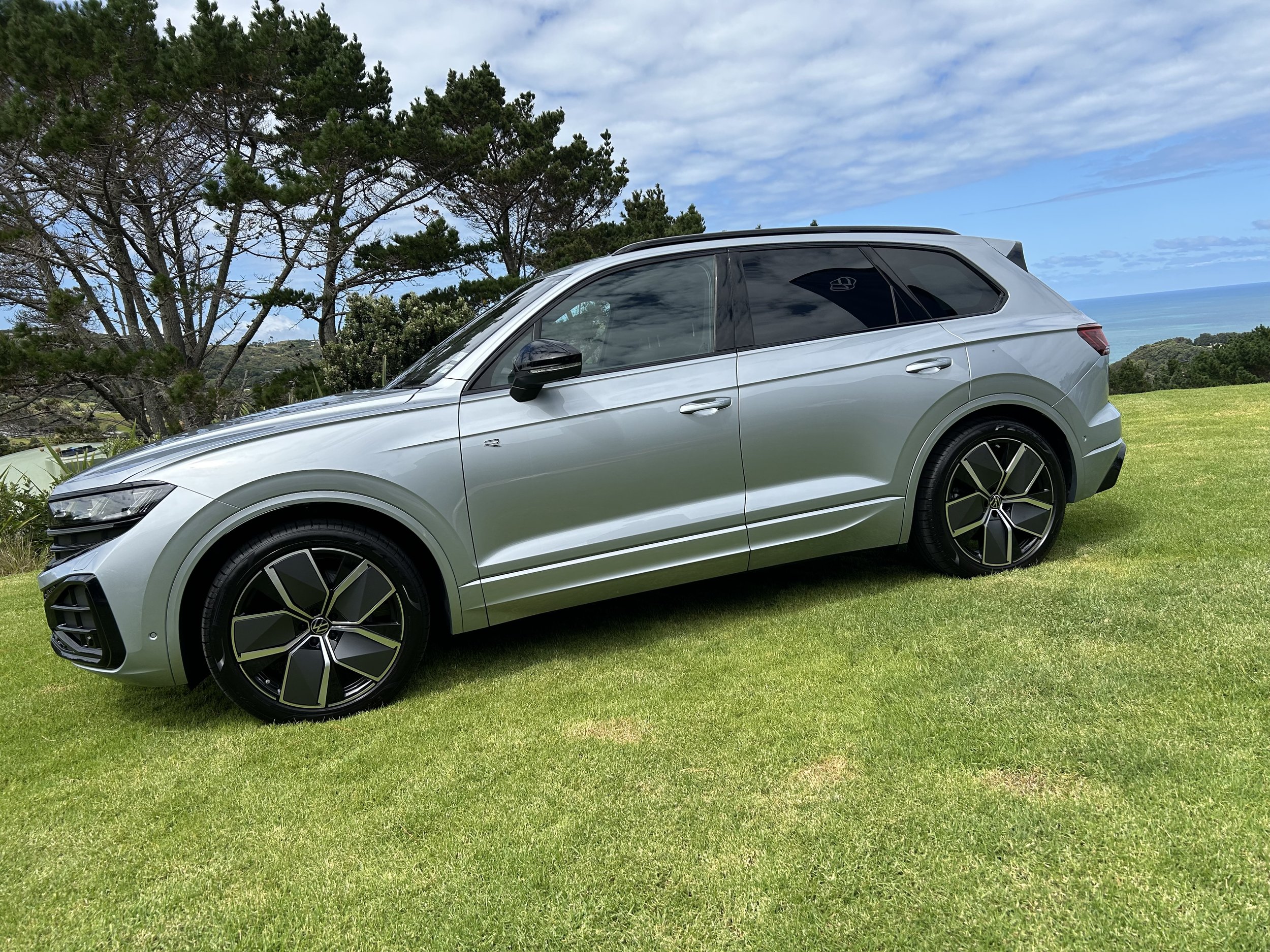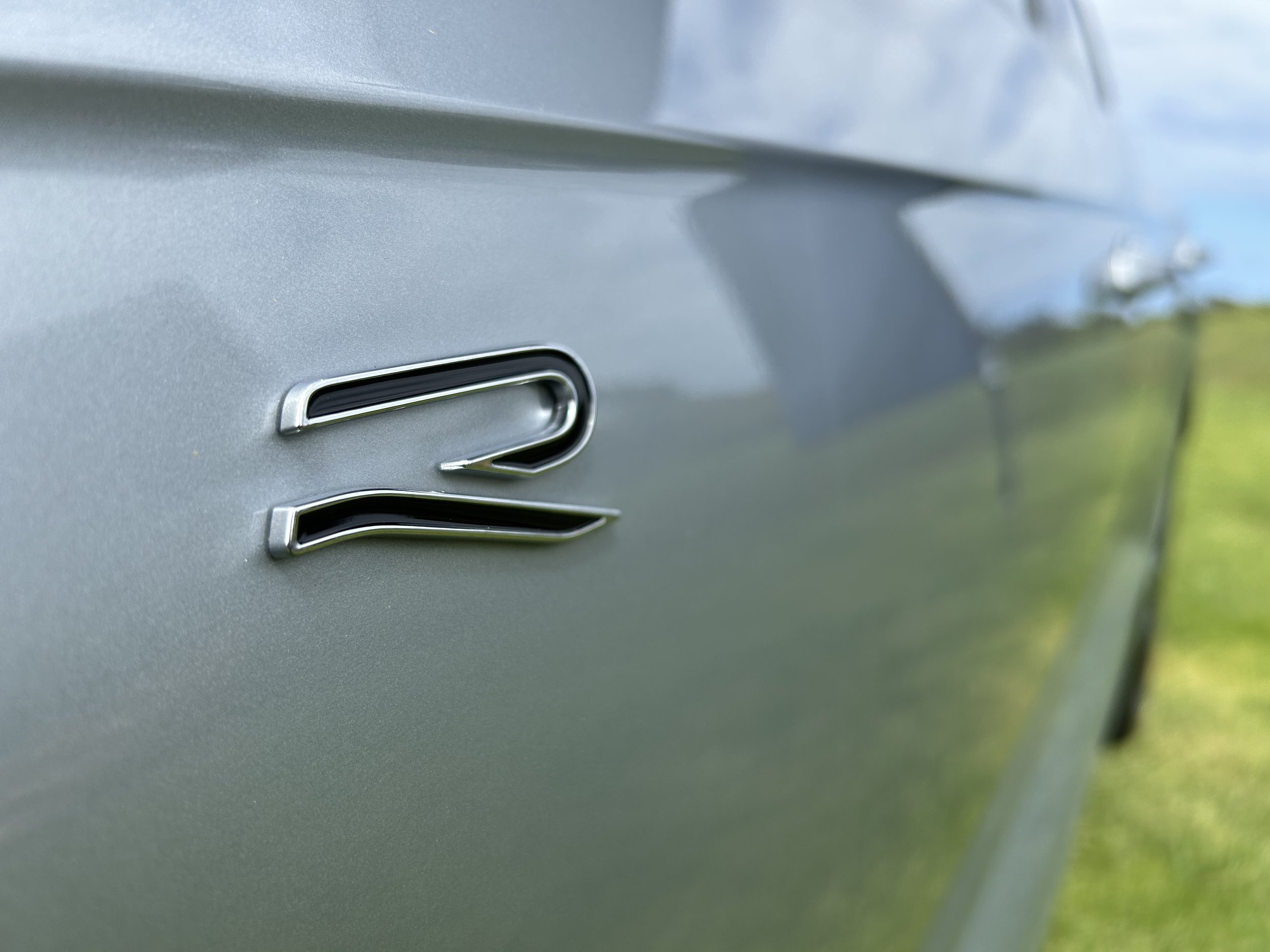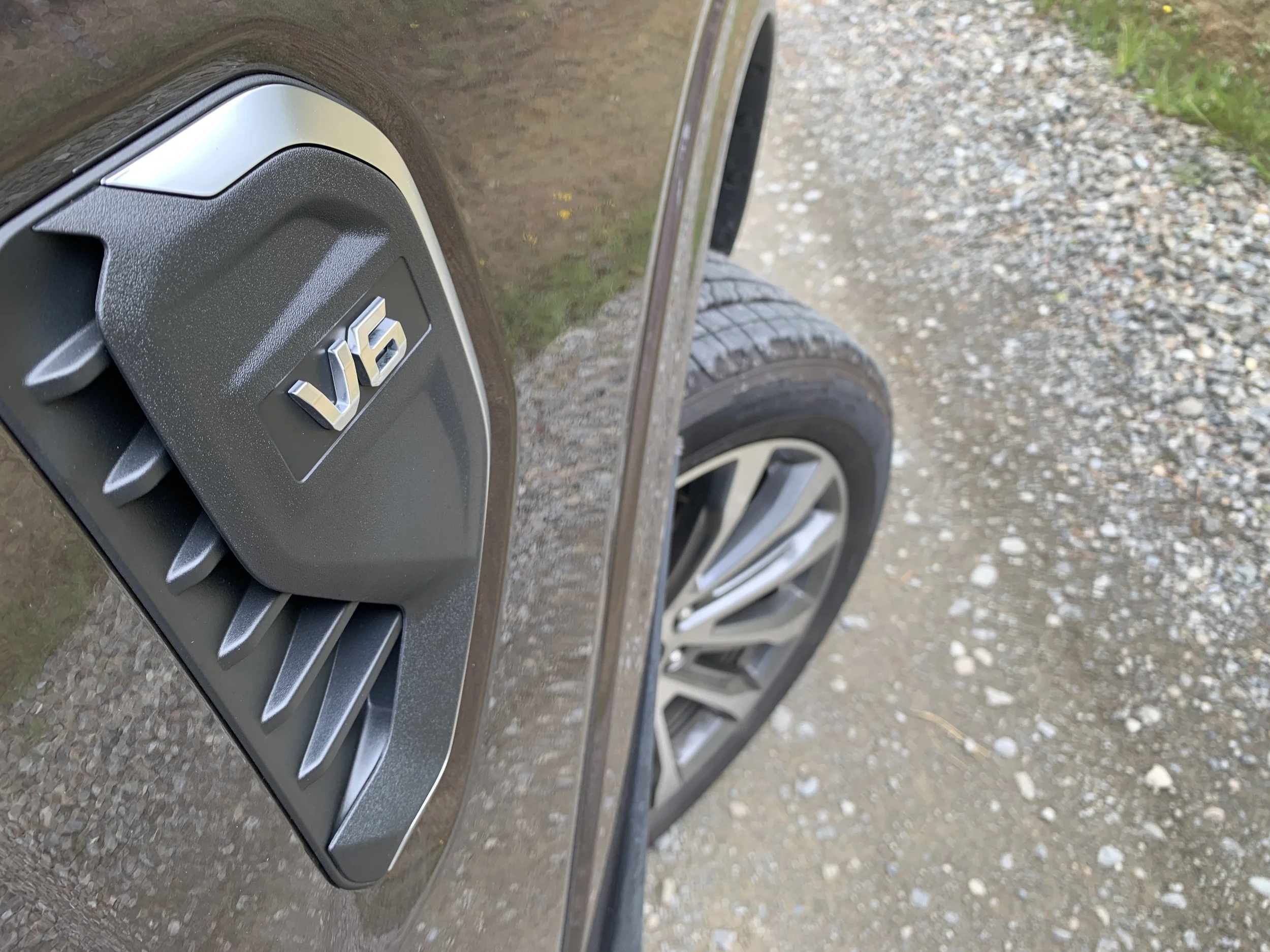VW Touareg update first drive: Petrol-electric option to diesel tradition
/A well-judged facelift finally delivers access to the PHEV drivetrain expected several years ago.
BIGGEST, gruntiest, fastest - and another Volkswagen product whose journey here was slowed by all the usual reasons.
The most potent ever evolution of Wolfsburg’s premium sports utility, the Touareg, will all likelihood, stand not just as an even pricier version of the most expensive VW here but also the last of the late arrivals.
The travails for the new Touareg R plug-in hybrid (above) have been something else.
Had the original product plan played out, this electric-assisted petrol V6 powertrain would have been the flagship choice of the pre-facelift line-up that’s now being retired, after six years on the job, rather than the freshened types now coming into play.
The PHEV was in fact first identified as a NZ market prospect at a time when Covid contagion hadn’t reached peak.
Back then Volkswagen New Zealand was highly hopeful of being among primary export markets for what has now landed as a $159,990 edition.
Of course, that all derailed.
It’s taken the best part of three years beyond the original deadline to nab a Touareg that is the first in the family to enter the electric age - albeit with just 53 kilometres’ pure battery-fed range - the first to drink petrol and the sole electrified option in the firm's R performance sub-brand.
All that and (ahem) it’s also VW’s most powerful car here, full stop.
The power play argument is based on exactly that: The power.
The 340kW output cited is the most a Touareg has ever had to handle. It outdoes not only the V10 diesel of the first gen (2002-2010) family but also, by 9kW, the bonkers W12-powered type that never broke out of Europe.
Talking torque, though, shows it gives up ground on the old V8 diesel. withdrawn two years ago. The PHEV is hardly deficient with 700Nm, but that’s still 200Nm short on what the eight cylinder delivered. It might surprise to be reminded that the V10 and W12, for all their awesomeness, generated 750Nm and 650Nm respectively.
Point of difference with the PHEV is that it has red-blooded go for Green extremes.
Give it heaps and there’s reward of full-on oomph, with a 0-100kmh time of 5.1 seconds and capped overall top speed of 250kmh cited.
Go easy on the gearbox-mounted electric motor, fed off a battery with an energy capacity of 14.1kWh, and there’s potential - if perhaps only for a short term - of an optimal fuel burn outcome of just 1.9 litres per 100km fuel burn.
In that mode, it’s also emitting 44 grams per kilometre into the environment, according to WLTP measurement. VW reckons there’s context in which owners, using Touareg for short city driving stunts, to get that level of efficiency.
In between driving, they envisage the battery in replenishment, which means eight hours from household mains supply, dropping to just two hours with a wallbox.
For all that brings to the table, the PHEV’s placement into basically Audi Q7 territory means it is considered an ancillary choice. The main drivers will be the cheaper two V6 turbodiesel types.
These are the same models that provisioned previously, in identical tune as before, with $5000 price hikes that come with specification improvements.
The base edition taking the 170kW/500Nm six-pot diesel lends $111,990 opportunity to the canny, but long-term expectation is that the $141,990 V6 S R-Line, far more affluent in presentation and more powerful too, in 210kW/600Nm tune, will keep its status as Kiwi-favourite variant.
From a brief drive of all three, it’s easy to understand why that view is held.
The PHEV certainly has an attraction - it’s the most refined of the three powerplants and the electric involvement is felt. Argument that it will be mainly bought by the clique that favoured the diesel V8 seems solid, regardless that they’re going to something very different.
The PHEV’s driving modes allow for EV-pure driving, but only if the battery is in good health. I’m none the wiser about the benefit. The battery pretty much drained when I got a turn so only involved electric-pure motion when starting off, and then just for a few seconds. It’s one of those systems that never entirely drains and is designed to restore from kinetic involvement whenever possible, so there’s always something to give.
At the other end of the spectrum, the base six is as it’s always been: Also well-sorted, but clearly working hardest in this context.
That higher-tuned diesel, though, is surely still going to be enough for most. It is markedly more alert than the entry six, and while response-wise it doesn’t have the immediacy of the petrol, there’s a big wave of torque to ride once it does get itself into action. It’s also suave and, when cruising at 100kmh, basically inaudible.
The distance to empty reading of 900 kilometres’ range from a full tank is always a nice attraction, too, and reminds why diesel remains so popular with SUV users who count distance driving as being important.
With both diesel, the consumption is cited at 7.9 litres per 100km. Emissions of 206 grams per kilometre from the more potent type is just one gram more than the entry mill’s.
The other attraction of the V6 S R-Line is that it is the only variant here with four-wheel steering, which helps with agility and makes tight situations significantly less stressful.
Beyond all that, there’s also the attraction of the 2024 updates to this sibling model to the Audi Q7 and Porsche Cayenne, alongside which it's produced at Volkswagen's Bratislava plant in Slovakia, being easily spotted and mostly useful.
This is a hefty design overhaul, bringing a significantly revised interior and updated digital technology, plus some tweaks to the chassis and the suspension - steel-sprung at base, air-sprung with V6 S and PHEV.
With Touareg in general the handling is pleasingly neutral and you can carry plenty of speed, but from first taste the air-suspended models seem a little more compliant, with option to stiffen things up if you want to push on, while height adjustment and self-levelling are introduced.
As always, change begins at the front, with a new-look front grille that aims to provide greater emphasis to this beefy model’s visual width.
The air ducts in the lower section of the front bumper are also larger than before and receive an individual design determined by the trim level.
The lights are new. Having been an option last time, VW’s fancy IQ Light HD matrix system, now with up to 19,216 micro-LEDs per unit, is now standard fare.
BW here has kept away from the chromed look meted the model in Europe; preferring instead a Black Edition look that is an option on home turf.
At the rear, the 2024-model-year Touareg becomes a real light district, with a new light bar across the tailgate, well new-look tail-light graphics and an illuminated rear badge – a first on a fossil fuel-reliant Volkswagen model sold here - all cherry-hued.
Wheel and tyre sizes start at 285/45 20 inch on the entry, 285/40 21s on the V6 S and 285/35 R22s on the PHEV.
Inside, the facelifted Touareg adopts the previously optional Innovision Cockpit as standard. This includes 12 inch instrument and 15 inch infotainment digital displays.
Upgrades to the software and functionality bring more advanced HD map data with lane-level sat-nav and a new voice-control system based around conversational commands. There's also wireless mirroring of smartphones via Apple CarPlay and Android Auto.
The driving assistance systems have been improved, and there’s a remote parking function via an app. A roof load sensor helps the ESC understand the loads it’s dealing with.
Other changes centre around the switchgear within the centre console and the USB-C ports, which have been upgraded from a charging capacity of 15W to 45W for faster recharging of electronic devices. There's also a new ambient lighting effect and the door trims have been subtly altered.
As before, there’s no option of seven seats so instead you get a vast cargo area, with more capacity in the diesels - 810-litres with the rear seats up and boot cover in place. The PHEV reduces to 655-litres because of the battery.
Head and legroom all round are plentiful for the tall and three adults on the rear bench won’t be much of a squeeze.
All variants continue with an eight-speed torque-converter automatic gearbox that still gets a bit thrumpy when downshifting and a 4Motion four-wheel drive system.
Whereas some PHEVs demand going lite on hauling a load, this one doesn’t - it has the same up-to-scratch towing capacity of 3500kg as the diesels.
VW also delivers the Touareg with a 250kW petrol V6 and also a plug-in hybrid that makes 280kW, but neither are considered necessary for NZ.
Meantime, while the first and second generation Touaregs each had eight year model runs, this generation’s freshen occurring six years into production reminds it is very likely to enjoy a longer lifespan than those forebears. VW NZ could not say how long it will be available, but probability is for at least four more years.
There’s expectation the Touareg will inevitably go electric, but also acknowledgement it could become the last mainstream VW to make that switch.
The writer attended this event as a guest of the brand, with travel and food provided.




















